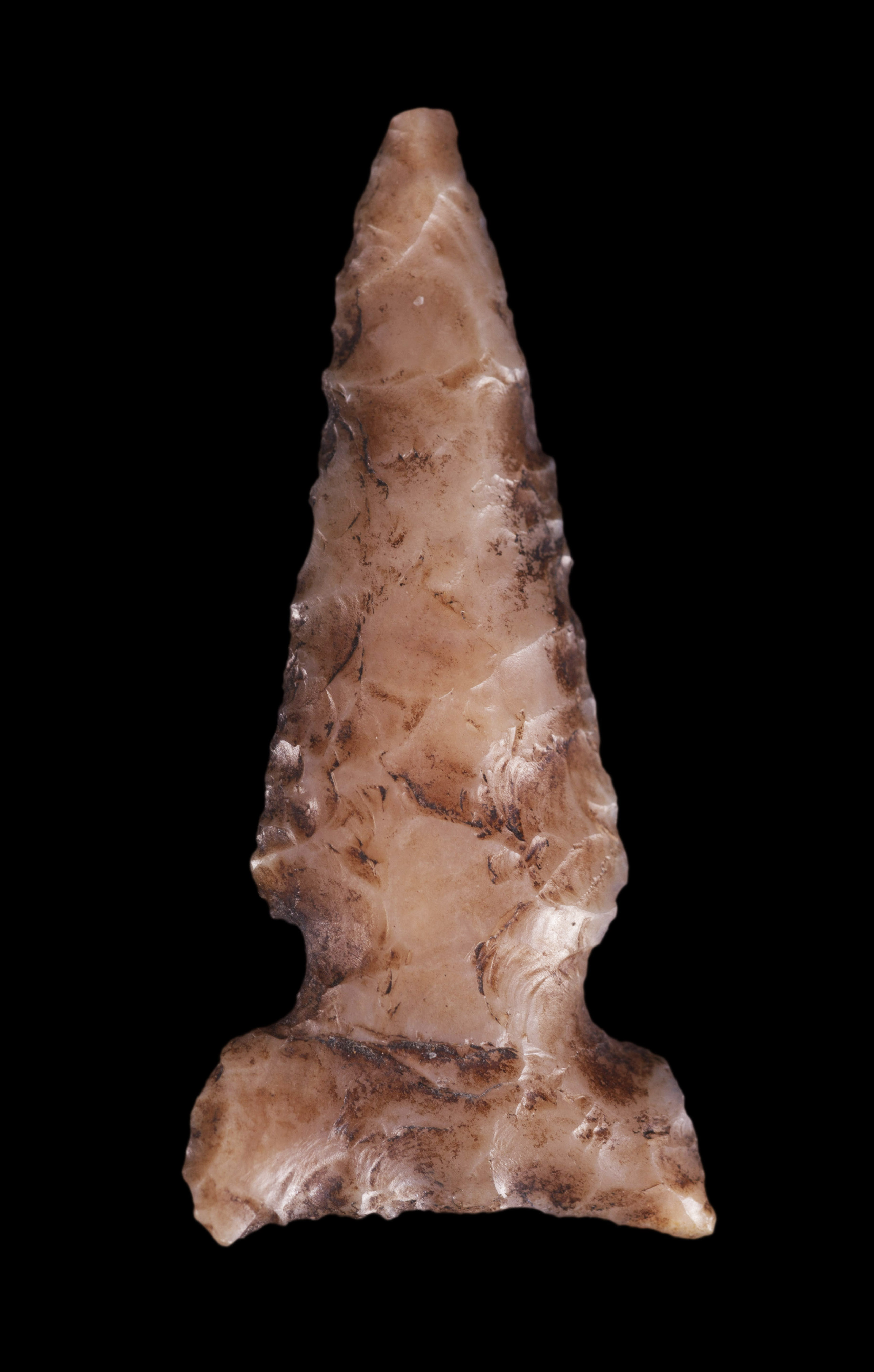
Snaketown Side-notched point, Tonto National Monument. Click the image to open the Snaketown Side-notched gallery.
Archaeological Culture: Hohokam
Geographical Range: Southern Arizona; concentrated near the confluence of the Salt and Gila rivers. Similar points have also been found in the Upper Verde River area, the Flagstaff area, and in east-central Arizona and western New Mexico.
Date Range: A.D. 1300-1450 (Sliva 1997); A.D. 1200-1400 (Justice 2002).
Size: Average max length: 25.8 mm; average max width: 12.3 mm; average max thickness: 3.4 mm (Justice 2002: Appendix).
Shape: Triangular with a narrow neck and low-set wide side notches; fine serrations are common.
Cross-section: Flattened to elliptical.
Base: Straight to concave, with prominent squared to rounded ears; ears may have slightly incurvate ends and are generally wider than the blade.
Flaking: Pressure.
Notching: U-shaped, wide, and low-set.
Materials: Chert, obsidian, and less frequently, other materials.
Other Names: Late Classic Side-notched; Sauceda Side-notched; Wide Side-notched.
Compiled from the following sources:
Justice, Noel D. (2002) Stone Age Spear and Arrow Points of the Southwestern United States. Indiana University Press, Bloomington.
Sliva, R. Jane. (1997) Introduction to the Study and Analysis of Flaked Stone Artifacts and Lithic Technology. Center for Desert Archaeology, Tucson.
Compiled by:
Meghann M. Vance, Northern Arizona University Anthropology Laboratories
